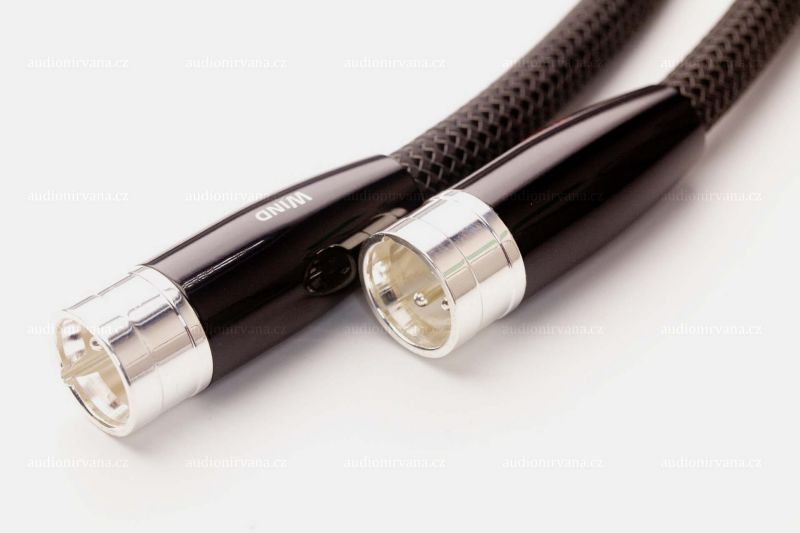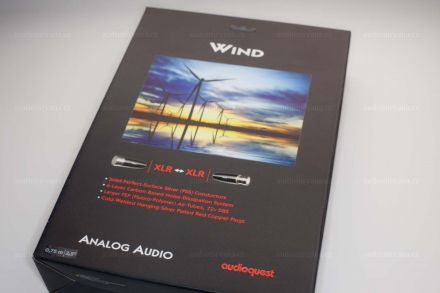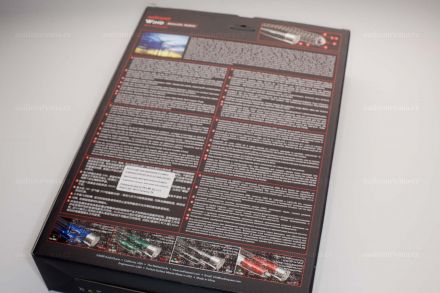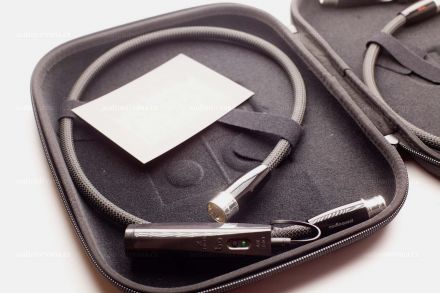You are here Home E-shop E-SHOP Analog cables Analog XLR cables Audioquest Wind Top XLR cabel
Audioquest Wind Top XLR cabel
In stock
Description - Audioquest Wind Top XLR cabel
SOLID PERFECT-SURFACE SILVER (PSS) CONDUCTORS
Perfect-Surface Technology applied to extreme-purity silver provides unprecedented clarity and dynamic contrast. Perfect-Surface Silver (PSS) is AudioQuest's highest-quality metal. Solid conductors prevent strand interaction, a major source of cable distortion. Extremely high-purity Perfect-Surface Silver minimizes distortion caused by the grain boundaries that exist within any metal conductor, nearly eliminating harshness and greatly increasing clarity compared to OFHC, OCC, 8N and other coppers.
FEP AIR-TUBE INSULATION (FEP IS A FLUORO-POLYMER)
Any solid material adjacent to a conductor is actually part of an imperfect circuit. Wire insulation and circuit board materials all absorb energy (loss). Some of this energy is stored and then later released as distortion. Air, however, absorbs next to no energy, and FEP is the best extrudable solid insulation, absorbing less energy than other materials. The use of FEP Air-Tube insulation, with almost nothing but air around the solid conductors, improves the sound of an audio system's focus and dynamics.
TRIPLE-BALANCED GEOMETRY (SEPARATE GROUND-REFERENCE CONDUCTOR)
Our Triple-Balanced Geometry uses a separate ground-reference conductor, so the cable's shield is never used as an inferior conductor. Whether prepared with RCA or XLR plugs, the cable's three conductors ensure that the positive and negative signals have equally superior, low-distortion conducting paths.
CARBON-BASED 6-LAYER NOISE-DISSIPATION SYSTEM (NDS)
It's easy to accomplish 100% shield coverage. Preventing captured Radio Frequency Interference (RFI) from modulating the equipment's ground reference requires AQ's Noise-Dissipation System (NDS). Traditional shield systems typically absorb and then drain noise/RF energy to component ground, modulating and distorting the critical "reference" ground plane, which in turn causes a distortion of the signal. NDS's alternating layers of metal and carbon-loaded synthetics "shield the shield," absorbing and reflecting most of this noise/RF energy before it reaches the layer attached to ground.
DIELECTRIC-BIAS SYSTEM WITH RADIO FREQUENCY TRAP
All insulation between two or more conductors is also a dielectric whose properties will affect the integrity of the signal. When the dielectric is unbiased, dielectric-involvement (absorption and non-linear release of energy) causes different amounts of time delay (phase shift) for different frequencies and energy levels, which is a real problem for very time-sensitive multi-octave audio. The inclusion of an RF Trap (developed for AudioQuest’s Niagara Series of power products), ensures that radio-frequency noise will not be induced into the signal conductors from the DBS field elements. (DBS, US Pat #s 7,126,055 & 7,872,195 B1)
COLD-WELDED, HANGING-SILVER PLATING DIRECTLY OVER HIGH-PURITY RED COPPER PLUGS
In the simplest sense, wind is air in motion produced by the uneven heating of the Earth’s surface by the sun. Because our planet is made of various land and water formations, from the severe heights of K2 to the placid Chicago River, it absorbs the sun’s radiation unevenly, creating differences in air pressure and the ensuing movement of air from high-pressure areas to lower ones. Wind is also one of our most valuable natural resources: As an alternative to fossil fuels, wind is plentiful, renewable, widely distributed, clean, produces no greenhouse gas emissions, and uses little land. While wind power may be more important today than ever before, it is by no means a new concept. Representations of ships under sail date as far back as 5500 B.C., while windmills may have been first used in Persia in 200 B.C. Among the classical elements, wind’s close relative, air, is pure, powerful, and fundamentally important to life. In Japanese philosophy, wind is a symbol of all things that grow, expand, and enjoy freedom of movement, in some ways best represented by the human mind. People born under the astrological signs of Gemini, Libra, and Aquarius are thought to have dominant air personalities, marked by kindness and social grace. Of course, wind itself may be the most graceful of all elements. It fans the flames of our deepest passions, dances atop the surfaces of our longest rivers, sings in the rustling of the largest leaves, and carves its initials into our mightiest rocks. The physical effect is often astounding: From the forever-swirling formations of Coyote Buttes in Utah, to the sculpted cypress trees seemingly frozen in time along California’s coast, wind holds a place as one of nature’s most masterful artists.








